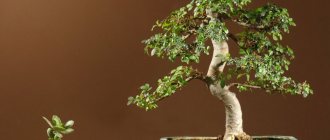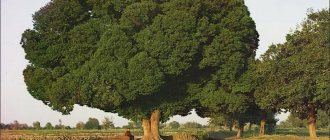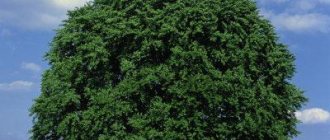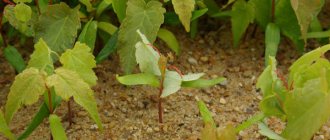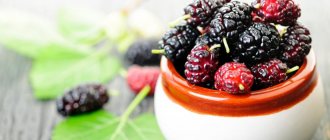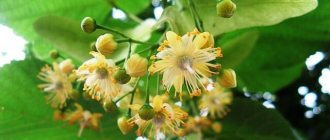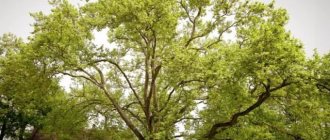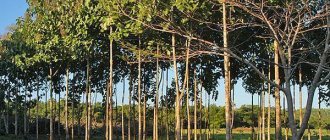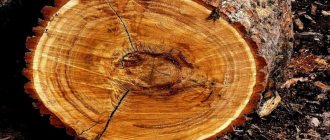Guaiac or Backout tree is a drought-resistant tree species of equatorial, tropical and subtropical climates, producing valuable heartwood called backout. This natural material is distinguished by its high density and weight, beautiful pattern, and significant tensile strength. The shavings contain up to 25% resins, essential oils, gum, and biologically active substances. The breed is cultivated on plantations, is characterized by slow growth and medium size, and is currently considered endangered.
Description of the species
In Europe, the Guaiac tree, among others, is called the “tree of life,” which in Latin is lignum vitae. Due to the hard qualities of the wood, it is also called “ironwood”. The population of the places where this variety of Guaiacum comes from noticed its medicinal properties, and therefore the botanical species of trees that give bakout began to be called Guaiacum officinale (Medicinal Guaiacum). The British began to call this breed “greenheart” because the heartwood is green. The Spanish gave the name Palo Santo Holy Tree.
The species belongs to the Zygophyllaceae family, Rutales order, Guaiacum genus. The plant was first described by Carl Linnaeus in 1753. The life form is a tree with an average height of 6-10 m. The intensity of growth processes of this species is low, the shoots grow gradually, which is why they take on the appearance of “jointed”. The crown of young trees is round and flat-rounded, while that of older trees is spreading, often with a deviating trunk. The root system is compact. The plant is capable of growing in tub culture.
The leaf is complex, consists of two or three pairs of oppositely located medium-sized oval leaves 2.5-3 cm long, 2 cm wide, and has small stipules. The surface of the leaves is shiny, leathery, which allows the plant to minimize transpiration, and the color is dark green. Leaves do not fall in winter. Each leaf has its own life cycle, and therefore a slight shedding of dead foliage occurs throughout the year.
Botanical description of generative organs:
- The inflorescence is an umbrella, formed on the tops of the shoots of the current year, as well as on perennial branches. The umbrella contains from 6 to 10 five-petaled bisexual flowers, the sepals are fused, the petals are free. The corolla is blue with shades from light and pale to deep blue. The flower has a distinct pistil and 10 stamens, the anthers are large, light yellow.
- The fruit is a dark yellow or orange capsule; when ripe, its covers fall apart into 2 or 4-5 parts, exposing the bright red leathery shell of the seeds.
- The seeds are dark, covered with dark yellow endosperm.
The plants are insect-pollinated; pollen is carried by bees, ensuring cross-pollination of individuals. The fruits are carried by birds over long distances.
The wood is heartwood in nature, green or olive with red to almost black streaks, rich in resins, merging with the core. The older the tree, the darker its wood. The density of wood and core is 1300-1450 g/dm3. The bark is hard and difficult to separate from the cambial layer. The breed as a whole is difficult to handle.
Root
In the botanical world, sandalwood is known as a plant that enters into a relationship of antagonistic symbiosis. Often, a sprout emerging from a seed attaches its roots to the root system of a neighboring plant and lives off it, receiving the necessary minerals and using the “partner” as a shady shelter at the beginning of its growth. There are about 300 species of plants that can become such a “parent” for sandalwood. In this case, the tree uses tubular structures (modified roots) called haustoria.
Upon contact with the roots of the host plant, the root tips of the young sandalwood form an organ (haustorium) that penetrates the roots of the host. As the roots grow, they form nodes up to two centimeters in size, which allow the sandalwood to capture the host's roots. In this combination, sandalwood depletes the host plant's resources, inhibits its normal growth, but never causes permanent damage.
On the other hand, it also happens that sandalwood acts as a completely self-sufficient, independent plant. In some cases, such use of a partner tree can last until the sandalwood reaches thirty years, after which it relies only on its own strength.
Santal tree is a representative of the high-frequency world of our planet. For all its inner strength, it is very sensitive and vulnerable. Today, a decrease in the plant population is caused by changes in climate and soil composition, rising temperatures (heat periods that sandalwood tolerates with great difficulty), increasing development of land for agricultural needs, epidemics of sandalwood wedge leaf disease (a viral disease that suppresses the growth of the tree and affects the leaves ). And yet, the spirit of sandalwood is still one of the manifestations of the real power of planet Earth, possessing high vibrations and unique depth.
Spreading
The natural habitats of the Guaiac tree are confined to the dry areas of the northern coast of South America, the Caribbean and Bahamas, and India. Backout is mined in Mexico, Venezuela, Guatemala, Costa Rica, Cuba, Jamaica, and cultivated in India.
The plant is very drought-resistant and can grow on depleted rocky and sandy soils. The slowdown of metabolism inside the plant during the dry season is facilitated by the high content of resins in wood - this beneficial property is developed by nature. The leathery leaves hardly evaporate moisture during dry periods and open their stomata during periods of favorable weather.
The place where Buddha lives
In the esoteric world, sandalwood is not even really a tree, it is a temple or space in which the Buddha field lives. This is a kind of ethereal palace, materialized in the form of a sandalwood sanctuary.
The meaning and importance of the sandalwood etheric temple was first determined by the Buddha, who to this day meets with his associates in the sandalwood forest of the Supreme Truth.
At one time, the Buddha's favorite place was the fragrant hall, or gandhakuti, where he loved to talk about his teachings, the wheel of reincarnation and karma. This is where such a reverent attitude in India arose towards all sandalwood temples, as well as towards the burning of sandalwood incense: these forms are repositories of knowledge and exponents of a special space. This is the volume that allows you to form an incorruptible body and use it for levitation.
Santal has its guardian Yaksha (Yakṣa). The importance of Yaksha is exceptional because only he allows the aroma to leave his place.
The Veluvana Temple in Rajagrahi is considered to be the first structure built from sandalwood. It was in this monastery that the Buddha initiated and developed various forms of knowledge of wisdom, and it is here, according to legend, that followers have the opportunity, even today, to tactilely come into contact with the Great Teacher. It is also customary to offer sandalwood incense to the Bodhi tree.
In India, there is a legend about the interaction between Buddha and santal ether: in the past, monks built a beautiful sandalwood temple and appealed to Buddha with an invitation to sanctify it with his presence. As the Enlightened One moved around the country, fragrant halls were built everywhere on his way, in which the Teacher was praised and honored. These halls in the future became monasteries, and only Santal incense was burned in them.
When Buddha arrived at the monks who invited him, he entered the sandalwood temple, but quickly realized that there were too many people who had come to receive his wisdom. Then he plunged the entire space into mist and turned the temple into a transparent crystal, so that everyone could see and hear it.
Meaning and Application
Backout is widely used in industry, medicine, perfumery and the entertainment industry, due to the properties of wood and the rich chemical composition of plant materials. Guaiac tree flowers are the heraldic symbol of Jamaica. Europeans have been able to learn about the valuable qualities of Bakauta wood since the discovery of America by Christopher Columbus, when active felling of guaiac trees began in Jamaica and Guatemala.
The indigenous population of Central and South America knew how to evaporate resin from wood by boiling it in water, and used it to treat joints, rheumatism, psoriasis, wound healing, nervous fatigue, throat and respiratory diseases. The wood and resin of these trees were used as chewing gum; during the oxidation process, it changed its color to blue, and when heated, to light. Later, an alcohol solution of resin began to be used as a reagent for determining the presence of blood (hemoglobin).
Industrial application of Backout is associated with the following industries:
- Construction of houses, churches, public buildings.
- Shipbuilding - this wood was used to make parts of ships and submarines that required the greatest strength (planks, ship propellers). Wood in sea water does not break down and continues to release resins.
- Mechanical engineering - wheel hubs and bearings, parts for hydroelectric power station turbines, and templates for turning products were made from Bakaut. Natural lubricant made this material indispensable for the manufacture of rubbing parts.
- In the 17th and 18th centuries, buckout parts were used in watches.
- In the perfume industry, Bakauta essential oil has a shade of rose and vanillin with a slight “smoke”; it was used to increase libido, promote muscle relaxation, and release from feelings of fear.
- In the furniture industry for the production of veneer.
- In the entertainment and tourism industry - golf and cricket clubs, billiard balls, bowling balls and skittles, souvenirs.
In terms of industrial value, the Backout tree makes a significant contribution to the economies of the countries that cultivate, process and export it. Undoubtedly, this species plays a significant role in the life of mankind.
Guaiac tree essential oil
Tree oil is extracted using the distillation method. What is characteristic is that the oil is almost solid; it can be compared to candied honey. This consistency is usually achieved at room temperature. Being molten at 40-50 degrees, it can remain in a supercooled state for a long time. The oil has a unique aroma with a slight hint of vanilla, rose and violet.
Notes[ | ]
- For the convention of indicating the class of dicotyledons as a superior taxon for the group of plants described in this article, see the section “APG Systems” of the article “Dicotyledons”.
- Menninger, 1970.
- ↑ 1234
Encyclopedic Dictionary of Medicinal, Essential Oil and Poisonous Plants / Comp. G. S. Ogolevets. - M.: Selkhozgiz, 1951. - P. 31. - 584 p. - ↑ 1 2 3 4
Blinova, 1990. - Wood. Lignum vitae. Carpentry and furniture directory
Literature[ | ]
- Muravyova D. A.
Tropical and subtropical medicinal plants. - M.: Medicine, 1983. - P. 336. - Blinova K. F. et al.
Botanical-pharmacognostic dictionary: Reference. manual / ed. K. F. Blinova, G. P. Yakovleva. - M.: Higher. school, 1990. - P. 179. - ISBN 5-06-000085-0. Archived copy from April 20, 2014 on the Wayback Machine - Menninger E.
Bizarre trees / trans. from English I. G. Gurova; edited by and with a preface. P. I. Lapina. - M.: Mir, 1970. - P. 371.
Contraindications
Despite all its positive properties, essential oil also has contraindications. It should never be used for depression (it only worsens it), and should not be used during an inflammatory process in the kidneys or during pregnancy. It is not recommended to apply the oil undiluted to the skin.
Substitutes
Since the original Santalum Album essential oil is extremely expensive, a natural substitute is a substance that is extracted from Australian, Pacific or Polynesian sandalwood. They have similar properties, but are characterized by a more bitter aroma.
But the West Indian sandalwood, known as Amyris, is not a related plant to Santalum Album. An oil with completely different properties is extracted from it (which does not prevent it, along with cedar, guriun balsam and copaiba balsam, from either completely replacing it or diluting the original oil with it).
